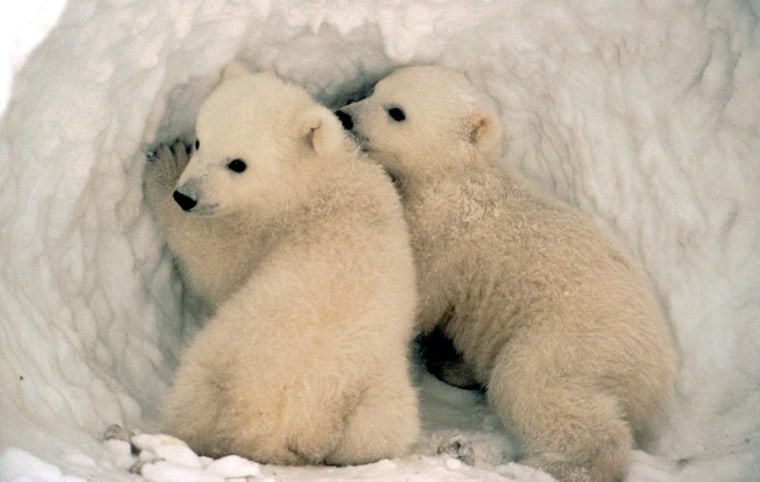Making good on a notice to sue last October, three environmental groups on Thursday filed a lawsuit against the Bush administration in order to get polar bears listed as threatened under the Endangered Species Act.
The lawsuit was filed in federal district court in San Francisco. The groups noted that this week Interior Department scientists released a report concluding that “drowning-related deaths of polar bears may increase in the future” if sea ice continues to shrink.
The report by the U.S. Minerals Management Service documented the deaths of four polar bears found drowned in September 2004, when the sea ice had retreated a record 160 miles north off Alaska’s northern coast.
The underlying threat, the groups argued in their first petition last February, is global warming. Many scientists tie manmade emissions of carbon dioxide and other so-called greenhouse gases to warmer global temperatures, and the United States is the largest emitter of C02.
“Survival of the world’s remaining polar bears is increasingly jeopardized by rapid disappearance of the Arctic sea ice on which they depend for hunting, mating and migration,” the groups said in a statement issued last October, when they filed a notice to sue after not hearing back on their petitions for listing.
“The polar bears’ habitat is melting right out from under them as Arctic temperatures rise,” said Kassie Siegel of the Center for Biological Diversity, one of the three groups. “Their entire lifecycle, from finding food to finding mates, depends on these seas being frozen.”
The other groups are Greenpeace and the Natural Resources Defense Council.
The Fish and Wildlife Service, the agency within the Interior Department that handles endangered species listings, said last October that it had received the February petition but that it was just one in a backlog of 50 for various species.
“We get petitions all the time and we have a number of them we’re looking through,” spokesman Chris Tollefson told MSNBC.com. The service hopes to get through most of those by the end of the year, he added.
The groups said that, if listed, polar bears would be the first mammal to officially be declared at risk due to global warming. They live only in the Arctic, feeding mainly on seals.
In the United States, only Alaska has polar bears. The U.S. population is estimated at between 2,000-5,000 bears. Arctic-wide estimates are between 21,000 and 28,000 bears.
A listing would require that U.S. government actions do not “jeopardize the continued existence” of polar bears or undermine their habitat.
The activists cited this evidence to bolster their petition:
- last September found that the Arctic ice cap has shrunk 20 percent since 1979.
- A 2004 Arctic Climate Impact Assessment report warned of melting Arctic sea ice, and indicated that global warming was a factor.
- The sea ice season has shortened by three weeks in Canada’s Western Hudson Bay. That coincides with fewer polar bear cubs surviving, and the total local population declined almost 14 percent from 1995 to 2004.
- Citing global warming as one factor, polar bear experts with the World Conservation Union last June urged that the species be classified as “vulnerable” on the group's “Red List” of wildlife at high risk of extinction.
Greenpeace said steps the administration could take include reducing use of fossil fuels, thereby reducing CO2 emissions.
